Research at ISAW
ISAW was founded to support research in the ancient world. This page describes some of the research projects in which our faculty, staff, students, and scholars are engaged. The results of this research are communicated in a variety of ways—in print, online, and in person—to a range of audiences including both scholars and the general public. As outlined in the faculty statement on assessment of research, we aim for quality and long-term accessibility in all our research outputs, regardless of medium, while embracing collaboration and both traditional and new forms of review and assessment. For archaeological resources within the wider NYU network see the NYU Archaeohub. See also the individual profiles of our community members, and the ISAW Publications page.
 Akkadian Ritual Texts in Mesopotamia
Akkadian Ritual Texts in Mesopotamia
Beate Pongratz-Leisten and Elizabeth Knott with Kate Justement and Yu Song
A multiyear project, Akkadian Ritual Texts in Mesopotamia was initially supported by the National Endowment for the Humanities's Scholarly Editions and Translations funding opportunity. The main output of this project will be a published volume (the first of two) on Akkadian ritual texts in Mesopotamia. The project is led by Beate Pongratz-Leisten (ISAW) and Elizabeth Knott (College of the Holy Cross and ISAW Affiliated Researcher)—serving as primary authors. The volume will highlight the performance and practice of ritual in ancient Mesopotamia through editions of Akkadian ritual texts dating from ca. 2350–200 BCE, which showcase an enormous range of activities that took place within and beyond temples and cities across the ancient world. The editions will include transliterations and translations, as well as grammar notes, and in-depth interpretive discussions of the texts.
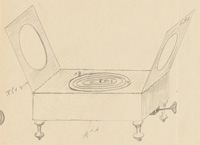 Antikythera Mechanism Research Project
Antikythera Mechanism Research Project
The Antikythera Mechanism was a bronze gearwork device displaying chronological cycles and motions and phenomena of the heavenly bodies, made somewhere in the Hellenistic world in the second or early first century B.C. ISAW's Alexander Jones is involved in a collaborative research project addressing unanswered questions about this fascinating object.
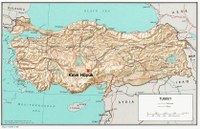 Archaeological Excavations at Kınık Höyük
Archaeological Excavations at Kınık Höyük
Kınık Höyük is located in Southern Cappadocia, in the province of Niğde. Current excavations are led for ISAW by Lorenzo d'Alfonso jointly with the University of Pavia, and with the participation of the Universities of Niğde and Erzurum (Turkey), and of the Laboratoire de Géographie physique, CNRS France. Current work includes historical and environmental reconstruction, investigation of ceramic production and micro-climate, and conservation in situ of major architectural remains dating to the first Millennium BC.
 Archaeology of "Long Walls" in Western Central Asia
Archaeology of "Long Walls" in Western Central Asia
Territorial barrier-walls are a widespread phenomenon in many micro-regions of Western Central Asia where they take the shape of large-scale oasis walls or linear barriers, similar to "long walls" known from other parts of the Old World. ISAW's Sören Stark is co-directing with Djamal Mirzaakhmedov from the Institute of Archaeology at the Uzbek Academy of Sciences an archaeological field project to investigate one of these features: the Dīvār-i Kanpirak (the long wall of Bukhārā).
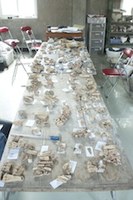 The Chinese Bronze Age Economics Project
The Chinese Bronze Age Economics Project
My fieldwork consists of a series of assemblage analyses at a number of Anyang period (ca. 1250-1050 BCE) sites. These include the massive Shang capital site at Anyang (3000 ha), the regional center of Daxingzhuang (30 ha), and the village of Guandimiao (2 ha), selected as different types of node in the Shang kingdom's political economic networks. I have five ongoing research projects at these sites, four of which involve bone working. The first project is a collaboration with the Chinese Academy of Social Sciences, Institute of Archaeology on the huge bone workshop at Tiesanlu Anyang, where 34 metric tons of animal bone waste was recovered and preliminary studies have shown that millions of hairpins for broad consumption were mass-produced. Work began in 2009 and continues with the current focus on production organization. At Zhengzhou, I have been working on the only excavated Shang village site, Guandimiao. This collaboration is with the Henan Provincial Institute of Cultural Relics and Archaeology. So far a preliminary English site report has been written as well as bone working and zooarchaeological reports completed. The worked bone analysis demonstrated surprising connections with the large-scale workshops of the capital, even while differentiating a distinct local, non-specialized production. Further work will focus on Guandimiao ceramic production and the bone working remains from the Erligang period (ca. 1600-1400 BCE) Zhengzhou bone workshop. At Jinan research into the Daxingzhuang worked bone assemblage is ongoing with Shandong University. Preliminary work suggests both local, small-scale, specialized production, and connections with the Anyang workshops. In addition to the Daxingzhuang bone artifact analysis my collaborators and I held a bone working experimental workshop at the Qingdao campus to help us better characterize tool marks and efficiencies. Further experimental workshops are planned.
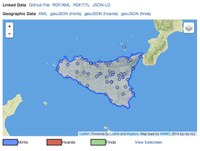 Digitizing Numismatics
Digitizing Numismatics
Continuing work begun while a Research Scientist at the American Numismatic Society, Sebastian Heath is working with colleagues there and at other institutions to provide a digital infrastructure for the discipline of numismatics. One result of this work is the site http://nomisma.org/, which publishes stable URIs (web addresses) for concepts in numismatics, frequently alongside relevant data.
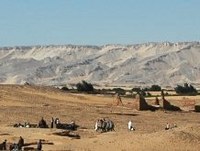 Excavations at Amheida
Excavations at Amheida
The excavations undertaken at the ancient city of Amheida (known as Trimithis in the Roman period) are a modern, multidisciplinary excavation. Graduate students from ISAW and other institutions take part in the excavations. The Amheida team makes its ongoing work available internationally to both scholarly and public audiences via the web as well as through printed work. Further information on the Amheida project is available online. The Amheida excavations are directed by David Ratzan.
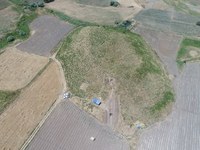 Gird-i Rostam, Iraqi Kurdistan
Gird-i Rostam, Iraqi Kurdistan
Gird-i Rostam is a multi-period site in Iraqi Kurdistan occupied from the Chalcolithic period (c. 4400 BC) to late Antiquity (5th-7th cents. AD). After a brief mapping campaign in 2017 excavations began in 2018 as a joint project between ISAW and the Ludwig-Maximilians-University in Munich with the enthusiastic support of the Directorate of Antiquities in the Governate of Suleimaniyah and its Director Kamal Rasheed. Co-directed by Dan Potts and Karen Radner (Munich), the project aims to establish a sequence for this little-known, easternmost corner of Kurdistan which lies close to the Iranian border in the Zagros mountains. Die-stamped ceramics with Christian crosses; prehistoric obsidian from sources near Nemrut Dag in Turkey and Syunik in Armenia; painted pottery parallels in Luristan and northern Mesopotamia; and a vessel fragment with a cuneiform inscription naming the dedicant, in all probability of Neo-Assyrian date, already suggest that Gird-i Rostam is going to contribute enormously to our understanding of the prehistory and early history of the Zagros. A full preliminary report on the 2018 season is published in the Dutch journal JEOL (Jaarbericht Ex Oriente Lux) and a second, very successful season was concluded in the summer of 2019 when fortification walls of both the Neo-Assyrian and Sasanian periods were exposed.
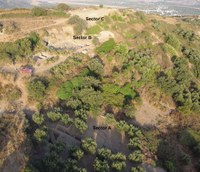 Lyktos Archaeological Project
Lyktos Archaeological Project
The archaeological investigation of Lyktos, the vast and largely untouched remnants of one of the most powerful Greek and Roman-period cities of the Mediterranean island of Crete, are co-directed by Antonis Kotsonas (ISAW) and Angelos Chaniotis (Institute for Advanced Study). More information about the Lyktos Archaeological Project may be found on this page.
 Reception of Chinese Antiquity
Reception of Chinese Antiquity
Interested in the reception of antiquity, Lillian Tseng is currently working on a book tentatively entitled Inspecting Steles: Cultural Agents and Visual Production in 18th-century China. It investigates why stone monuments erected in the past emerged as a major scholarly concern and how the scholarly pursuit of ancient monuments affected the production of contemporary visual works that range from painting, calligraphy to illustrated catalogues. It articulates different dynamics in agents and mediums. It also addresses issues surrounding historical memory and social communication.
 Shanati: The Ancient Babylonian Calendar Reconstructed & Synchronized with the Proleptic Julian Calendar
Shanati: The Ancient Babylonian Calendar Reconstructed & Synchronized with the Proleptic Julian Calendar
David Danzig and Alexander Jones
This research effort aims to reconstruct the daily Ancient Babylonian Calendar; synchronize it with other ancient calendars; and provide easy access to the date conversions, the full evidence trail for the reconstruction, and data services to other web platforms.
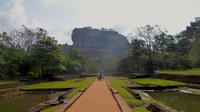 Sigiriya Spatial and Landscape Data Collaboration
Sigiriya Spatial and Landscape Data Collaboration
Tom Elliott and Divya Kumar-Dumas
SSLDC is a collaborative initiative to collect, develop, test, and promulgate best practices for digital collection, digital dissemination, and digital archiving of data and reports reflecting archaeological and allied-field research on the ancient Indian Ocean world.